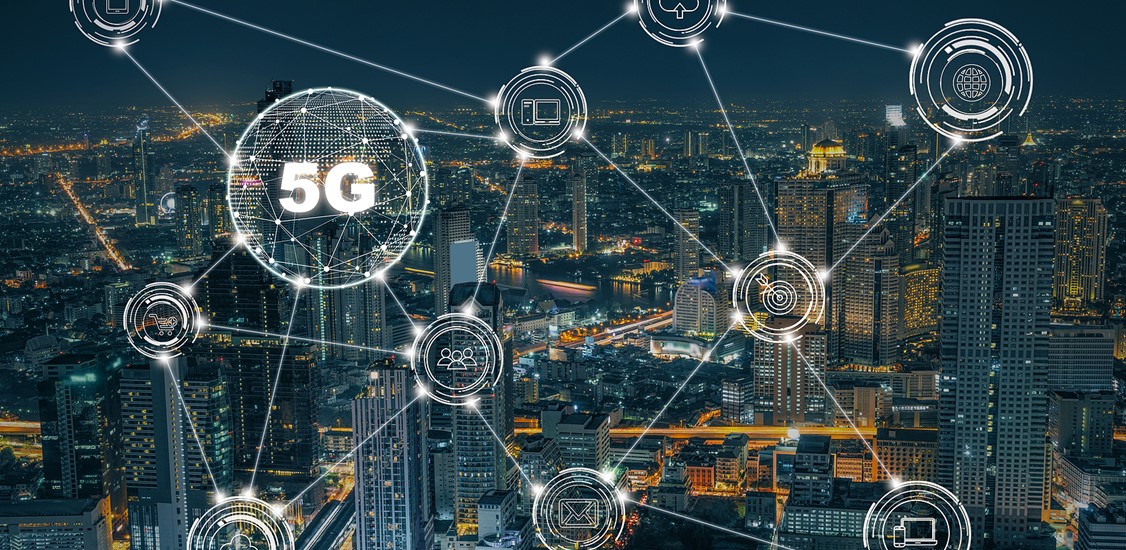Some of the main benefits of 5G have enhanced mobile broadband by offering ultra-reliable, low latency communications and massive connectivity. The industry has been saying that for quite a few years, but truly understanding the power that 5G can bring is a different matter.
Of course, the early adopters of 5G are mainly for handsets, tablets and other mobile devices to deliver streaming video content through enhanced mobile broadband (EMBB), and that’s how most consumers initially saw the benefits of the technology. 5G’s ultra-reliable, low-latency communication (URLLC) will follow, with massive machine-type communication (MMTC) later.
5G offers many advantages over other wireless technologies, such as 4G LTE and WiFi 6. In comparison, 5G offers much higher speeds, lower latency, higher reliability and massive connectivity. Instead of replacing other wireless technologies with 5G, designers are using these technologies in a complementary way, developing new use cases that provide the best user experience.
The impact of 5G
One of the key functions of 5G is massive connectivity, which is improving efficiencies in every part of our lives - whether that be in personal lives, business, industrial IoT (IIoT), automotive or healthcare. Some of the benefits of implementing 5G include higher productivity, improved efficiency, lower congestion, and reduced pollution.
An example of where 5G can help improve efficiencies and user experience in all walks of life is in healthcare. In the past, if we needed a particular medical check-up, we would have to wait until a specialist was available and then visit the clinic at a pre-allocated time. While it is important for your health, it may not be very efficient in the overall use of time depending on the health issue at hand.
Through virtual consultations, 80-90 percent of a patient visit can typically be accomplished via video conferencing, allowing for more efficient use of time both for the patient and the specialist. If the patient does need to see a doctor for further examination, then the doctor can prioritize accordingly.
Beyond medical, 5G solutions are being leveraged across a variety of smart city applications, even if we don’t necessarily see or realize it. Network operators are bringing cities to the digital future through applications like smart waste management, parking sensors, and traffic congestion monitoring.
Furthermore, 5G solutions are being used in tandem with vehicle-to-everything (V2X) technologies, allowing for smart, safe communication between vehicles and infrastructure, the cloud, and one another. Due to a shift to cellular V2X (C-V2X), the most recent industry standard for vehicle communication after the WLAN-based V2X, the use of 5G in V2X connectivity is more possible than ever before. Beyond leading automakers deploying C-V2X in their vehicles, C-V2X products are installed across cities, counties, and school districts to enable high-bandwidth communication, continuous network connectivity to the network, and faster response times.
Cost and security concerns
5G devices indeed require additional hardware with a higher price tag than 4G devices, but these costs will eventually fall as production ramps up.
In the past, data was held on the desktop and it had one server and an enterprise environment. When everything went into the cloud, there was constant back and forth communication through the core network. IoT devices often lack solid security design, and there is an inherent risk in creating new, connected 5G networks that could expose sensitive or mission-critical information. Taking a layered approach (network slicing/compute-at-the-edge) to security covers these gaps. Indeed, end-to-end security will be critical in protecting communication paths between devices, users and the core network.
A good example is if we have information that is deemed business-critical. With 5G, we can have mobile edge computing. By having the computing power local at the edge to the network slice, we can do all of the critical nature of whatever the task may be - whether video, driving machinery virtually - and set up protocols that decide what goes out into the network or remain in the slice. In essence, we can control what is exposed to any potential security risk.
Network slicing can also be applied in transportation; we hear so much about log jams at incoming ports, for instance. Having the ability to do more and more of that efficiently with virtual enterprise network slices will drive that whole function a lot more efficiently.
The ability to continually improve efficiencies in power conversion leads to a lot of materials development, as well as new product and module developments. Digital transformation and energy transformation are the main two drivers for material development and technology innovation. It is very important to understand both of those.
Faster response times
When used in combination with artificial intelligence (AI), machine learning (ML), virtual reality (VR) and augmented reality (AR), new use cases are possible. 5G’s ultra-low latency, for instance, makes the once laggy AI/VR experience, which can be very disorienting for users, almost real-time.
A shining example is for people studying pre-med to become a doctor. Here, one of the core competencies is cadaver studies. This training is now made possible virtually through the use of a VR headset. Add to this haptic response and Time of Flight (ToF) sensors, and the experience is virtually real.
Future outlook beyond 5G
When new technologies like 5G come into place, we think about potential use cases and how the world is going to evolve and adapt and take advantage of that. The exciting part is yet to come - there are so many use cases that have yet to transpire. People are creative and find new ways to do things, taking advantage of what is there either bandwidth and connectivity.
Connectivity in the IoT space today has millions of data points - something that was not possible a short while ago. Recently while watching the US Open Tennis Championships on TV, the channel showed how many datapoints that were being captured on each tennis player as they played. How coaches and players use all of that data to improve their game is astonishing. Capture the data, connect it all, and figure out how to improve efficiencies.
If you were to sit down with me and ask about potential use cases for 5G, a couple of years ago, I would have never thought it would help improve the performance of professional tennis players. People are taking advantage of the technology to fulfill their particular needs.
Building on top of these 5G trends, I do not believe that 6G will bring something brand new as it has not yet been projected to significantly transform connectivity. Yes, there will be some new frequency bands up into the terahertz range that will provide much larger bandwidths, but it will be building more on machine learning, AI and taking that capability to process that much more data. With faster bandwidths, we can build on that capability to do even more and you keep expanding it.
In transitioning 5G and then eventually 6G, does it also give networks improved security? Does it become more secure as we go to higher frequencies, or is security just a separate issue altogether? For me, it is a separate issue altogether. There are no inherent security improvements in the TeraHertz band, as opposed to the MegaHertz band. I believe it is more about the ability to have those slices, where portions of the network are used for very critical tasks.
However, when networking technologies head on up to the terahertz range, we will need new materials to create the appropriate filter technologies and products that can handle the bandwidths necessary in those frequency bands. As we add more AI and ML, we’re adding multiple processor units - whether it is a GPU or more ASICs, and decentralized (at-the-edge) processors - there is that much more power needed for each function, so the ability to do it efficiently becomes even more critical.




















